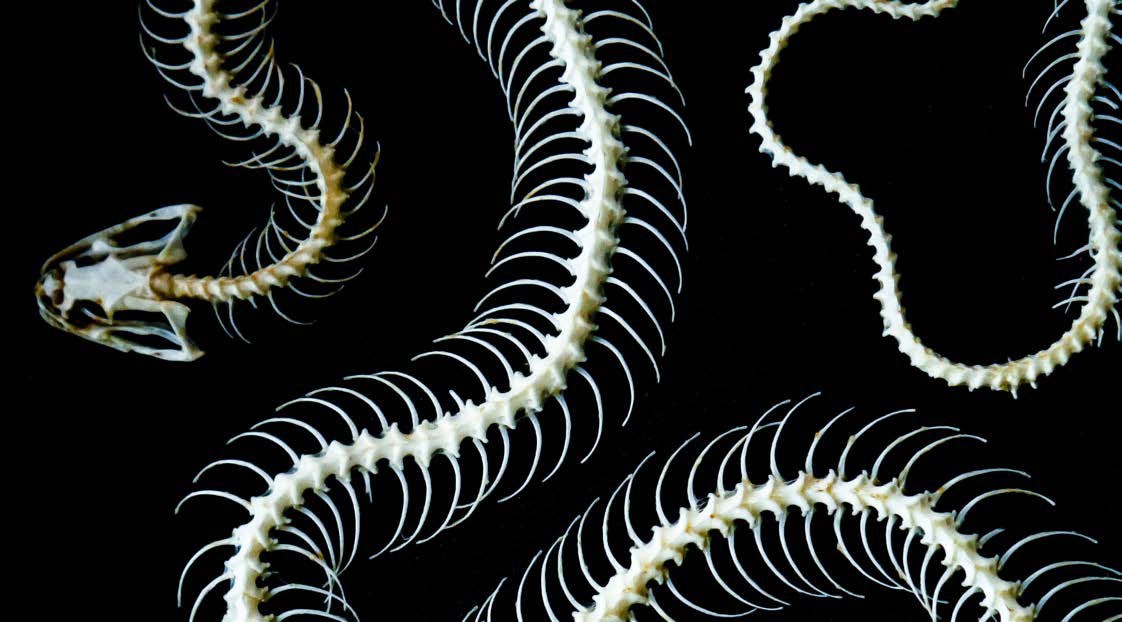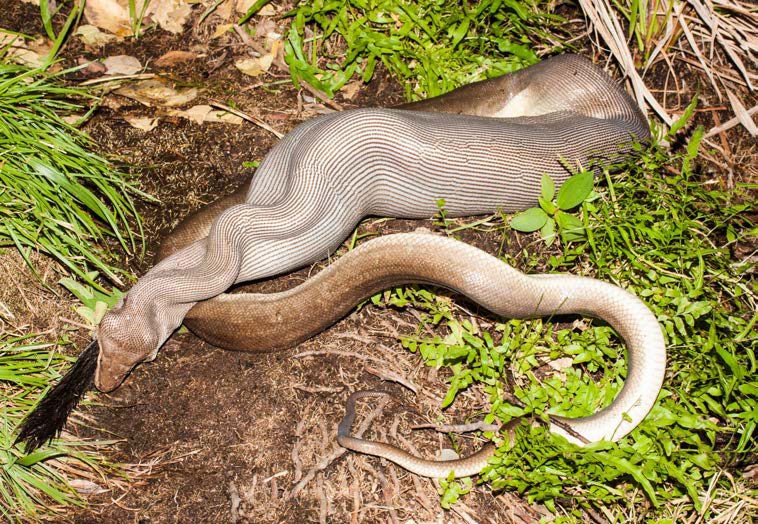
Photo courtesy Tarakanbix/
www.shutterstock.com If there’s one thing snakes in general are known for, it is their ability to overpower and eat prey significantly larger than their anatomical girth. All species of snake basically feed in the same way, with prey being swallowed whole rather than being chewed up, in spite of the presence of a formidable battery of teeth in their mouth. These serve to capture and anchor prey however, so that it can be overpowered, in the absence of limbs.

An olive python that has just caught and largely swallowed a rock wallaby, distending its body quite considerably.
Photo courtesy Ken Griffiths/
www.shutterstock.com